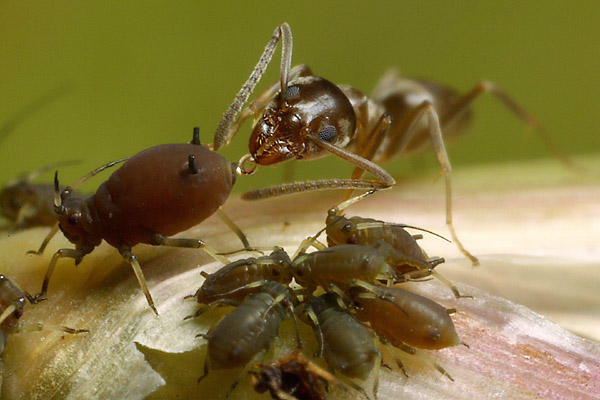Ed Roland
Addicted to ArboristSite
It's Mr. Maas to you, but I didn't mean to put a bee in your bonnet.
If you read my post you'll see I said, "...the aphids I assume we're talking about here..."
I didn't know the "Whooly adelgid" had anything to do with ants, but we don't see a problem with those insects here too much, so I'm no expert.
I simply believe in many cases it's better to let nature run it's course, instead of spraying pesticides on every insect you notice. Obviously there are times when it might be best to spray, but only as a last resort, after, or in conjunction with, giving the tree optimal cultural benefits. Examples might be watering during droughts, mulching, soil test followed by indicated changes, and using products that are environmentally friendlier than some of the harsh pesticides.
Remember, trees need foliage, but they necessarily don't need it all. Look at the leaves on any tree come later in the fall. They almost all have percentages damaged by fungus, chewed off by insects, missing completely from wind storms, and yes, even damage by sucking insects.
When you spray pesticides, do you only affect the target? Do beneficial insects get it too? Does any of the product get on you, or get in the water table and cause cancer? Is the homeowners lawn and soil contaminated with it? What does the spray do to the interconnection of different life forms from micro-organisms to mammals?
Couple of things there, al gore jr.
1. We are all professionals and its very unlikely anyone here broadcast sprays landscapes to control insects. We all select pesticides that are more target specific and less toxic to other species or the environment.
2. Are we to assume you are able to erradicate a high population of hardscale on mature Quercus with cultural practices?
3. The woolly adelgid is an aphid.
4. According to Dr. Bruce Fraedrich, Dr. Booth and Dr. Smiley of the Bartlett Lab Facility in NC proper aphid control begins with managing the ants on the plant.
5. No bees in my bonnet but as for using "Mr" before your name, respect is earned, not demanded.






